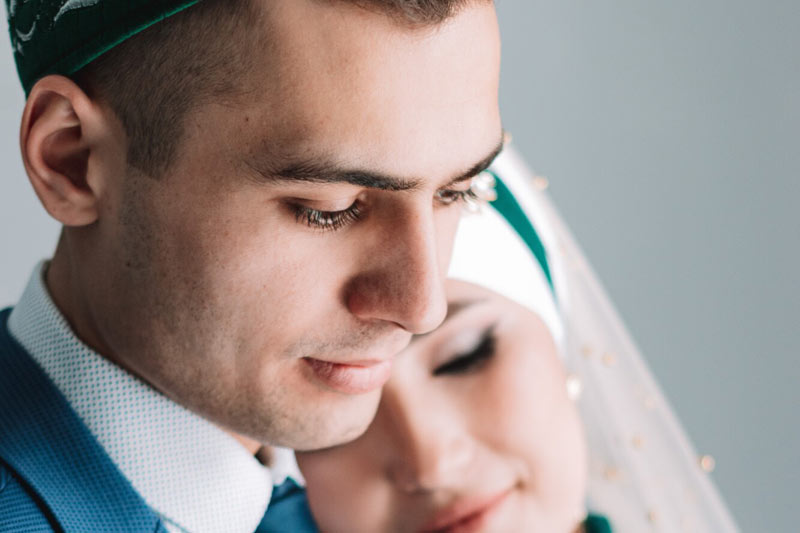Whether you are marrying into a Muslim family, attending the wedding of a Muslim friend, or yourself are a practicing Muslim, you must understand all of the traditions associated with Islam.
Many modern Muslims, especially those living outside of traditionally Muslim countries, pick and choose their traditions to fit with their modern lifestyles. That said, when it comes to large ceremonies, like weddings, they may feel more inclined to follow traditions in a closer way.
Islamic wedding traditions are unique, and they are quite different from the weddings that non-Muslims are used to. We are here to talk about some of the most common Muslim wedding traditions, both old and new, so that you can prepare for your (or your friend’s) wedding.
Keep reading to learn more.
Pre-Wedding: The Tolbe
The Tolbe, or Tulba, happens before the wedding. This is an old-fashioned tradition that some Muslims choose not to participate in, but many modernize it to fit current lifestyles.
During the Tolbe, the future groom asks the future bride’s parents for their blessing and support. In modern times, this is more of a formality than an actual request. It is a way to keep old traditions alive and make the marriage feel more “legitimate.”
If both sets of parents agree to the wedding, someone will read from the Holy Quran. After this, everyone has snacks and tea. This is when the bride and groom can start planning their wedding together.
After this, there is a more traditional “engagement” ceremony (though not every sect of Islam participates. This is a small event where only close family members come together to celebrate the couple. The couple may wear matching outfits, and they will exchange rings.
Pre-Wedding: Radwa
Radwa is another special gathering that is for small groups. During this event, the men in the group have to make sure that the women (especially the bride and her family) are content with the event.
The men will take care of last-minute preparations and problems before the wedding ceremony itself, and the patriarch of the groom’s family will formally congratulate the couple.
The Marriage Ceremony
The marriage ceremony for Muslim weddings is called the katbAl-kitaab. Unlike many western weddings, this is somewhat of an intimate event. That said, some Muslims who are no longer adhering to tradition may make it a larger party.
During this ceremony, a sheikh will present a contract that both spouses will sign. The guests that attend this ceremony will dress in conservative outfits that cover their arms and legs. Women will cover their hair with scarves (though these scarves do not have to be hijabs).
The Zaffa
This is something that westerners may feel more familiar with. A zaffa (or zaffe) is a wedding party (or a wedding reception) where everyone can let loose and relax.
Traditional attire may be required, but many people allow more casual or party-friendly outfits during this event. Make sure that you check with the new couple before the event if there is no dress code in the invitation.
During the zaffa, the bride and groom are the stars of the show. They may sit at the front of the room in special seats called kosha. After this, everyone will drink to the couple’s health.
Dancing is appropriate during the zaffa. Before the guests start to dance, there may be professional dancers who lead the celebration. Most weddings will have live music and other entertainment, like belly dancers.
As with most other wedding receptions, there will be a buffet-style meal for the guests that contain all manners of food, from vegetarian dishes to expensive meats.
During the zaffa, the couple will cut their cake and move their rings from their right hands to their left hands. Families and friends will then come up to the bride and groom and offer their gifts (which may be either objects or money).
Modern vs. Traditional Practices
You may notice that the wedding reception is similar to western wedding receptions. This is partially due to westernization, but it is also a sign that Islamic weddings are getting more casual as the religion becomes more inclusive for young people.
For these modern weddings, it is appropriate for women to wear dresses that offer less coverage. They can expose their arms and sometimes their legs while they are at the party.
Sometimes modern traditions intersect with older ones. In this case, it is possible that the men of the family will not be able to attend the reception if women are wearing outfits that expose more skin. They may have their own private party outdoors or in a separate room.
Performers and other staff (such as caterers and photographers) should all be women if this is the case, so no man has to look at a woman who is wearing something “immodest” or modern.
After the dance, women will cover their skin with shawls or jackets so the men can come back to the party.
In some traditional weddings, the party ends long after the bride and groom leave the event. Guests can stay and dance until they are ready to go home while the couple begins their “honeymoon” (which is often a complimentary stay in a hotel).
Christian wedding traditions inspire many modern Muslim wedding traditions.
Islamic Wedding Traditions: Festivities, Fun, and Traditional Practices
Many westerners are under the impression that Islam is all about arranged marriages and conservative parties, but this isn’t true. Many Muslim wedding traditions are similar to weddings in the west.
If you’re preparing for your own wedding or a friend’s wedding, you can be sure that you’re going to have a great time with these Islamic wedding traditions.
Are you planning a wedding? Find your favorite vendors and get more wedding tips for your special day! We have a full directory of wedding vendors so you can have a perfect event.
Wedding Details is your comprehensive guide to all aspects of your wedding. From traditional ceremonies to questions regarding the guests, our website offers you one place to do all your research.

